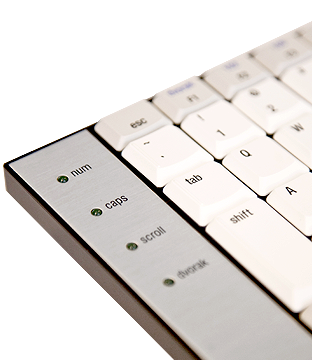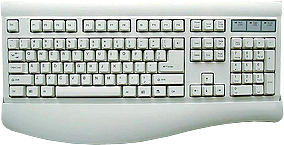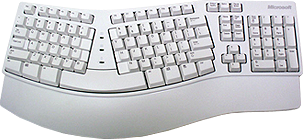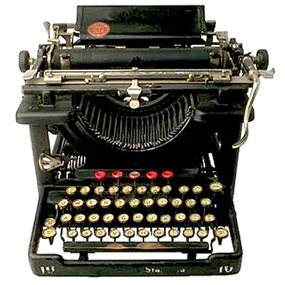Feel the Benefits
TypeMatrix offers the only balanced ergonomic keyboards that reduce the motions known to cause Repetitive Strain Injury. By solving ergonomic issues without the use of bulky contouring, TypeMatrix keyboards deliver all the functions of a standard keyboard in one small, sleek and logical package that easily fits in a standard briefcase or laptop bag.
Benefits of the 2030 Keyboard

- Prevents typing injuries
- Reduces or eliminates existing typing symptoms
- 90% of users get complete or significant reduction of pain
- Switchable to Dvorak layout (50% less finger travel)
- Promotes centered positioning and ease of use
- Designed for professions requiring extended typing use
(programmers, writers, clerical, etc.)

The Evolution of the Keyboard
Learn how the standard keyboard layout used today dates back to the 19th century.
-
Standard Keyboard
The design of the standard keyboard was grandfathered in from the original typewriter layout - established in the 1870s. It forces the hand, wrists, and shoulders out of alignment, causing strain and injury with extended use. The added length places the mouse outside the comfort zone, creating arm and shoulder strain.

-
Conventional Ergonomic Keyboard
While the typical ergonomic design improves position for some users, it doesn't solve the pain problem for many others. Conventional ergonomic keyboards still conform to the "staggered columns" layout, remaining from the typewriter era, which forces unbalanced motions straining the fingers, hands and wrists as much as standard keyboards do.

-
TypeMatrix 2030 Keyboard
The 2030 is unique in that it strikes the perfect balance between ergonomics and design: Matrix design that reduces the motions known to cause Repetitive Strain Injury, AND intelligent rearrangement of the keys that places the hands, wrists and shoulders in a neutral position.


Original Typewriter Design
The first commercial QWERTY typewriter was invented in 1872, before ergonomics was of any concern. This layout was adopted as industry standard and has survived virtually unchanged into the 21st century.
Staggered Columns
Forces unbalanced motions that strain fingers, hands and wrists.

Vertical Columns
Reduces motions that cause Repetitive Strain Injury (RSI).
